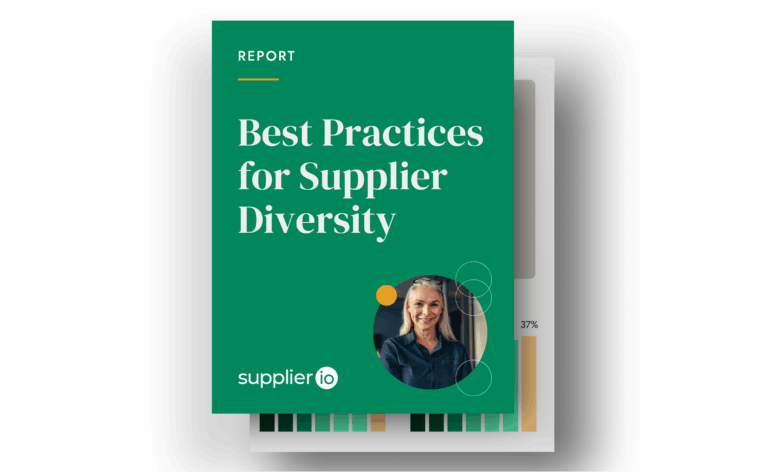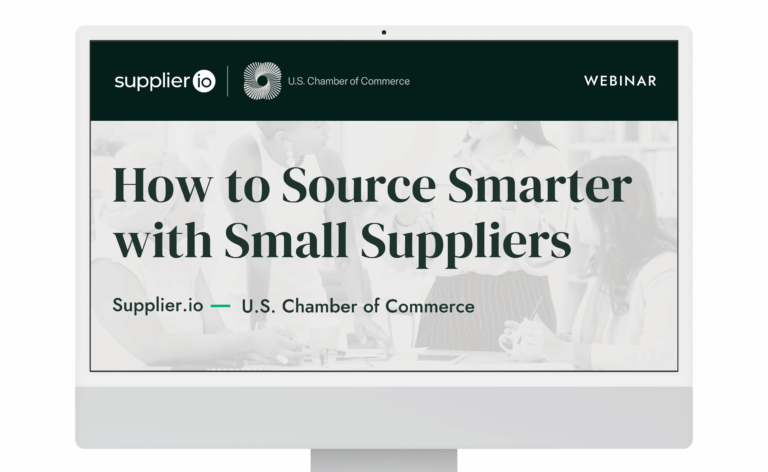What You Should Know: Tier 1 vs Tier 2 Supplier Diversity Spend
A “Tier 2 Program” can be easy to implement and significantly improve your supplier diversity results. Learn the differences between these programs and how they improve your results.

What is the difference between Tier 1 and Tier 2 supplier diversity spend?
Every company is part of a larger supply chain that includes third party product and service providers. Some of those suppliers, known as prime suppliers, work directly with the company and others are one or more steps – or tiers – away in the supply chain. Although prime suppliers are the top priority for supplier diversity programs, you will quickly find that the potential for impact scales quickly when you consider Tier 2 and beyond.
Understanding the differences of supplier diversity reporting by tier is vital to maximizing the success of your program. Here is a brief primer on tier 1 and tier 2 spend and how both benefit the impact and longevity of supplier diversity initiatives.
Tier 1 Spend Explained
Tier 1 suppliers come in many forms—the tech company whose software and hardware you use to run your organization; the manufacturer that delivers a key component for your product; the small business that landscapes your grounds; the consulting firm that offers specialized knowledge; and so on.
A typical large business will contract hundreds, even thousands of tier 1 suppliers, and so they are the most immediate gauge of supplier diversity.
The number of diverse suppliers under contract can be tracked, as can the percentage of diverse businesses in the overall supplier portfolio. Spend can be measured in terms of dollars and as a percentage of total spend.
Despite the straightforward sound of these tasks, challenges abound. Tracking these metrics is a considerable task, especially for a company working with hundreds of diverse suppliers.
Moreover, confirming that a tier 1 supplier is diverse can be time-consuming. Even accurate data does not necessarily stay accurate—the business you contracted with a few years ago may have experienced an ownership change and no longer be considered diverse.
Dedicated supplier diversity software solutions can help you accurately track your program’s diversity metrics, making it possible to get immediate answers on the status of suppliers in your program. The more informed a company has about the status of their supplier diversity program, the more progress they can make.
Tier 2 Spend Explained
Tier 2 suppliers are your suppliers’ suppliers.
Although they are only tied to your business indirectly, they play an important role. If a key tier 1 supplier doesn’t have the materials necessary to manufacture its component for your production line, they either must temporarily halt production or scramble to find another supplier that can deliver what they need to fulfill your order.
Tier 2 supplier diversity reports give supplier diversity programs a view of how diligent their tier 1 suppliers— whether diverse or non-diverse—are at contracting their own diverse partners.
For government contracts, tier 2 suppliers are considered an acceptable inclusion in an organization’s overall diverse spend, and this trend is beginning to expand to the private sector as well.
This development is significant because it allows large, non-diverse suppliers to indirectly contribute to your supplier diversity requirements.
Besides encouraging key suppliers to embrace supplier diversity, tier 2 diversity initiatives give companies more criteria to include in supplier assessments and prequalification. The challenge with this approach is accessing accurate tier 2 supplier diversity data.
Supplier diversity software with Tier 2 reporting capabilities provide a big boost in this regard.
Web-based portals are easy to use and can combine Tier 1 spend and Tier 2 spend as needed, and data enrichment can be included in existing spend analysis and/or supplier management databases. The reports deliver accurate spend numbers to meet government requirements as well as to fulfill accurate internal information.
In our 2021 State of Supplier Diversity Report, 54 percent of responding supplier diversity professionals said their program tracks Tier 2 spend. 30% of those companies consistently include Tier 2 diversity clauses in contracts with their prime suppliers, and 38% provide support to their prime suppliers to help increase their own supplier diversity.
Tier 2 reporting is a key part of supplier diversity’s future. With the right strategy and tools, your program will be ready for that future.
Ready to start Tier 2 reporting? Contact our sales representatives to learn more about how Supplier.io can help you amplify your impact!




